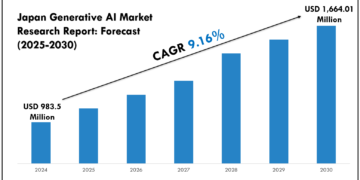Hyperconverged infrastructure solutions in 2025 are popular for combining computing, storage, and networking from a single software source, which utilizes server software for all operations.
Most HCI software was initially used as an alternative to the expensive and complex storage solutions for the VMware environment. So, how does HCI vs traditional infrastructure span out eventually?
These tools, also referred to as hyper-converged integrated systems, were sold exclusively by one hardware provider. However, there is now a stark difference between HCIS and HCI.
What are the HCI Solutions?
Hyperconverged Infrastructure (HCI) Solutions include computation, storage, virtualization, and networking under the same roof. HCI Solutions simplifies management and enhances scalability. Compared to traditional solutions, it is also cheaper.
The Hyper Converged Infrastructure (HCI) Solutions mainly provides virtual computing, software-defined storage, and networking. This software can also facilitate unified management and is capable of local, direct-attached storage at each node.
Therefore, HCI is paramount for high-availability data services. The use of hypervisors may also enhance certain features.
Similarly, the utility of HCI can also be improved through hypervisors, networking, and management tools. All HCI are connected to third-party software, offering a large and complex software stack.
Selecting the Best Hyperconverged Infrastructure Solutions of 2025
Choosing the best HCIS can be a challenging task. Check out the list below and select your preferred vendor:
1. Sangfor
Sangfor is one of the most optimized hyperconverged infrastructure platforms, catering to the diverse business needs of both SMBs and global clients. To modernize its IT infrastructure, Sangfor utilizes converging computing, storage, and networking solutions to create an integrated and seamless platform.
In 2025, Sangfor will be one of the leading HCI providers, accredited by businesses seeking to streamline their operations, reduce costs, and enhance performance. Sangfor is popular for these pivotal features:
- Built-in feature for Data Protection.
- Improved scalability that also helps minimize downtime.
- Cost-effective IT tools to improve ROI.
- Effective AI integration.
2. Cisco
Cisco software and services can offer easy access to data from a wide range of locations. Cisco’s HCI tools are based on the trademark HyperFlex Hybrid Line.
This composite platform offers various configurations, including Hybrid Notes, which are designed to host workloads. Cisco also comes with the HX220C M5 and 240C M5.
However, the best feature of the platform is Intersight. It is a SaaS solution powered by the Cloud. Cloud support is crucial for predictive failure analysis, problem-solving, and edge deployment for Cisco’s HyperFlex Edge.
3. Data Core
One of the most effective storage virtualization and storage solutions is Data Core’s software. They are experts in virtualized infrastructure and play a great role in expanding capacity, increasing data access, and automating storage administration.
Data Core can work across various operating systems, including Windows, Linux, NetWare, macOS, UNIX, and more. The primary platform, DataCore SANsymphony, is initially utilized for core IT and edge-based use cases.
Data Core can also blend hyperconverged storage with the SAN networks and multiple servers. It also helps in scaling the computing and storage components independently.
4. Dell EMC
Dell EMC’s HCIS is an expert in hybrid cloud management and also offers big data capabilities. Dell utilizes a centralized infrastructure to integrate servers, storage solutions, and cybersecurity technologies.
Dell’s VxRail apps are based on the virtual storage area networks. Simultaneously, Dell’s EMC comes with a cloud designed as a turnkey hybrid cloud, helping emerging brands that are trying to operate Kubernetes at a cloud level.
The vendor also offers HCI solutions standardized around Microsoft technologies and Microsoft Azure’s HCI infrastructure.
5. Hewlett-Packard
HPE, also known as Hewlett-Packard Enterprise, is a provider of scalable infrastructure solutions that offer cloud services, data centers, and office applications. To stand apart from competitors, HP relies on the Nimble Disaggregated HCI solution.
Clients using HPE can help manage their resources to ensure optimal spending. Therefore, Nimble Storage dHCI is a promising fit for companies that need to support apps with substantial data growth, as well as those that rely on data resilience.
6. Infinidat
Infinidat serves companies and service providers that have pre-developed primary and secondary-level storage architectures, offering comprehensive data services. These services work through Infinidat’s InfiniVerse. This unique IT service platform provides:
- Efficient IT benefits.
- Help for tackling on-premise workloads and multi-cloud workloads.
Infinidat is also known for its 1-00% availability, guaranteed SLAs, and enterprise IT and business IT priorities.
Infinidat has also received an award for its data services. It is also one of the most recommended architectures by users.
7. Microsoft
Microsoft is one of the leading global providers of Hyperconverged Infrastructure Solutions, developing licenses that support a range of services and products. They are also a mass-scale global wholesaler of a full stack of products and services.
The common enterprise tools of Microsoft include Azure and others. However, Azure is the most popular.
The Azure Stack HCI platform offers on-premises and edge services that integrate with the Azure cloud. The best part is that Microsoft’s services are subscription-based. Meanwhile, the HCI stack and Hyper-V that comes with Azure Cloud are also included in the subscription.
Choose The Best Hyperconverged Infrastructure Solutions
To select the right Hyperconverged Infrastructure Solutions for your business, consider your niche workloads, management preferences, budget limitations, and scalability requirements.
When selecting HCI vendors, review their management tools and pricing strategies. Some of the key features to look out for are integrated architecture, centralized management, high availability, and automation.


























